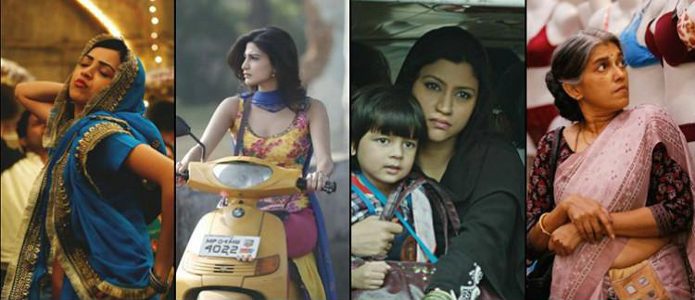Gender Roles in Bollywood
Time for change

Dashing young men, docile beauties, languorous glances – in Indian films gender roles are usually clearly defined. However, a growing number of Indian women are increasingly unwilling to accept the stereotypes.
By Martin Jahrfeld
Think India, think Bollywood. No sector of the Indian economy is quite as closely associated with the subcontinent as the Mumbai-based film industry which produces several Hindi films a year for domestic and foreign fans. The sector’s commercial success has been impressive: Bollywood sells around 3.6 billion tickets at cinema counters each year, approximately one billion more than its rival Hollywood in the US.
Yet regardless of the value creation, the film industry’s enormous influence on the country’s culture and society is controversial in many ways. Example: skin colour. In most productions, heroes and heroines are fair-skinned; dark-skinned Indians, in contrast, tend to be stigmatised in many films, or do not feature at all. And most films take care to hide the country’s many social problems. The stories usually revolve around the middle and upper classes and the urban milieu. There is little interest in the lot of the poor and the rural population, which account for the bulk of the country by a long way.
stereotypes and clichés
During an International Week of Justice organised by the Friedrich-Ebert-Stiftung in Berlin, Bollywood fans learned about a different form of reality distortion. According to Nishta Madaan and Zarah Udwadia, two Indian social scientists, Bollywood is dominated by stereotypes and clichés even at the level of gender roles. It starts with the professions practised by the characters in the film, as shown in a presentation by Nishta Madaan from the IBM Research Institute in New Delhi, who based her findings on a study of several hundred Bollywood films. While women usually assume the role of housewife, secretary and, above all, teacher, men tend to be lawyers, professional sportsmen or top-level managers.‘The high-level jobs are reserved for men, women work in subaltern professions,’ says Madaan, summing things up. The character attributes are often no less cliché-ridden. Male roles come equipped with characteristics such as self-confidence, aggression or wealth, while women are usually pretty, patient and tolerant. Such stereotypes often have a formative influence on the behaviour of young Indian men and women, for instance when they enter into a relationship. While men are allowed to be persistent, even pushy when courting a woman, young women are expected to offer passive resistance – a convention that further cements the existing gender inequality and is misused in daily life, to legitimise violence against women as well.
differentiated role models?
Bollywood productions that make a conscious attempt to break these gender stereotypes and to replace them with differentiated role models have so far been more the exception. According to Zarah Udwaia, in just about 12 per cent of all films is the main role played by a woman actively fighting for self-determination. In India, productions that question common stereotypes attract both attention and well-intentioned criticism: the case of ‘Masaan’ is an example where the sexual relationship between a young couple is threatened by denunciation and police persecution. ‘Lipstick under my Burkha’, a film that describes the sexual expectations and disappointments of four women belonging to different age groups and from different milieus, met an enthusiastic response at several festivals.In the context of conventional Bollywood productions, in which the relationship between the sexes is usually highly romanticised, sexuality – particularly in its female form – remains a delicate subject, encumbered with many taboos. This is ensured not least by India’s powerful censor board which examines all productions to make sure that they are free of religious or moral concerns and, when in doubt, censors them rigorously. Even ‘Lipstick under my Burkha’ was accused by the authorities of being too ‘lady-oriented’. Some scenes had to be cut from the film before it was cleared.
That the country’s film industry invariably arouses passion and emotion was proved last year by the controversy surrounding the film ‘Padmavati’: The historical epic about an Indian woman ruler and a Muslim conqueror provoked the wrath of conservatives who sensed a distortion of historical facts in the plot. Cinemas that wanted to include the film in their programme were threatened with arson, one of the critics of the film even declared that he wanted to cut off the nose of the lead actress.